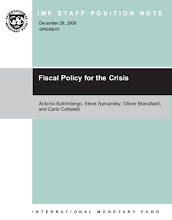The Reserve Bank of India (RBI) on August1 in a move to tighten regulation on Non Banking Financial Companies (NBFCs), with asset size of Rs 100 crore and above, has increased the capital to Risk Weighted to Assets Ratio (CRAR), from the current 10% to 12% by March 31, 2009, and to 15% by March 31, 2010.
Earlier non-deposit taking NBFCs were subjected to minimal regulation. But, in the light of the evolution and integration of the financial sector, the RBI felt that all systemically relevant entities offering financial services ought to be brought under a suitable regulatory framework to contain systemic risk. Systemically, important non-deposit taking NBFCs will also have to make additional disclosures in their balance sheets from the year ending March 31, 2009. These disclosures relate to CRAR, exposure to real estate sector, both direct and indirect and maturity pattern of assets and liabilities. The RBI’s move might be aimed at discouraging the practice of corporates to divert funds to real estate through their NBFCs.
Earlier on July 31, the RBI had said that NBFCs could not include the balance in their deferred tax liabilities within their tier-I or tier-II capital base. The RBI also stressed that deferred tax assets would be treated as a non-physical asset and this, too, would be excluded from NBFCs’ tier-I capital. Recognising that certain NBFCs may be unable to comply with the required CRAR requirements, RBI has given these players an appropriate transition period.
Earlier non-deposit taking NBFCs were subjected to minimal regulation. But, in the light of the evolution and integration of the financial sector, the RBI felt that all systemically relevant entities offering financial services ought to be brought under a suitable regulatory framework to contain systemic risk. Systemically, important non-deposit taking NBFCs will also have to make additional disclosures in their balance sheets from the year ending March 31, 2009. These disclosures relate to CRAR, exposure to real estate sector, both direct and indirect and maturity pattern of assets and liabilities. The RBI’s move might be aimed at discouraging the practice of corporates to divert funds to real estate through their NBFCs.
Earlier on July 31, the RBI had said that NBFCs could not include the balance in their deferred tax liabilities within their tier-I or tier-II capital base. The RBI also stressed that deferred tax assets would be treated as a non-physical asset and this, too, would be excluded from NBFCs’ tier-I capital. Recognising that certain NBFCs may be unable to comply with the required CRAR requirements, RBI has given these players an appropriate transition period.




No comments:
Post a Comment